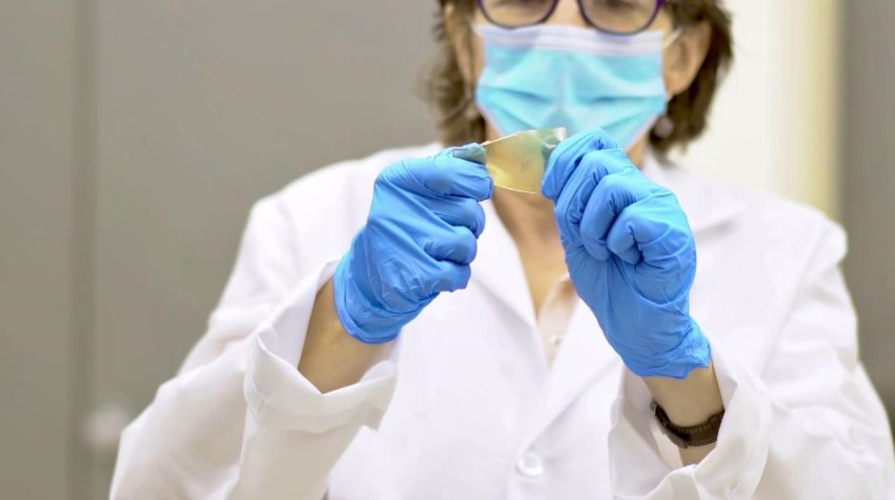
The first-of-its-kind, 3D printable and stimuli-responsive polymeric materials offer new opportunities for morphing unmanned air vehicles and robotic platforms, said Dr. Frank Gardea, an aerospace engineer and principal investigator of this work for the US Army's Combat Capabilities Development Command's Army Research Laboratory.
Self-healing material shows conductivity boost under strain
Self-healing thermoelectric material adds durability to wearables
Army researchers envision a future platform, suitable for air and ground missions, with the reconfiguration characteristics of the T-1000 character in Terminator 2, he said. As the research matures, the epoxy material is expected to have massive reconfigurability and have embedded intelligence allowing it to autonomously adapt to its environment without external control.
"We want a system of materials to simultaneously provide structure, sensing and response," Gardea said in a statement.
The material currently responds to temperature, which researchers first selected because of its ease of use during laboratory testing. In the real world, applying a temperature stimulus is more challenging so they introduced light-responsiveness as it is easier to control and apply remotely, Gardea said.
Polymers are made up of repeating units and for softer polymers these chains are lightly connected to each other through crosslinks. More crosslinks add rigidity to the material.
"Most cross-linked materials, especially those that are 3D printed, tend to have a fixed form, meaning that once you manufacture your part the material cannot be reprocessed or melted," Gardea said.
This new material is said to have a dynamic bond that allows it to go from liquid to solid multiple times, which allows it to be 3D printed and recycled. In addition, the dynamic bonds introduce a unique shape memory behaviour.
According to the US Army Research Laboratory, the flexibility introduced to the polymer chain allows it to be fine-tuned, in unprecedented ways, to get either the softness of rubber or the strength of load-bearing plastics.
Dr. Bryan Glaz, associate chief scientist for the lab's Vehicle Technology Directorate, said much of the previous work on adaptive materials were for materials systems that are either too soft for structural applications or otherwise not suitable for platform development.
Glaz said the research team's scientific advancement marks "a first step along a very long path toward realising the scientific possibility for deep future platforms."
The researchers have published their findings in Advanced Functional Materials.
Gardea said the immediate next steps are to enhance the actuation behaviour and healing. The researchers also want to introduce multi-responsiveness and have the material respond to stimuli beyond temperature and light.




Poll: Should the UK’s railways be renationalised?
I'm in favour because of the ownwership of the so called "private" rail companies. Many have significant foreign state ownership. RATP (French state...